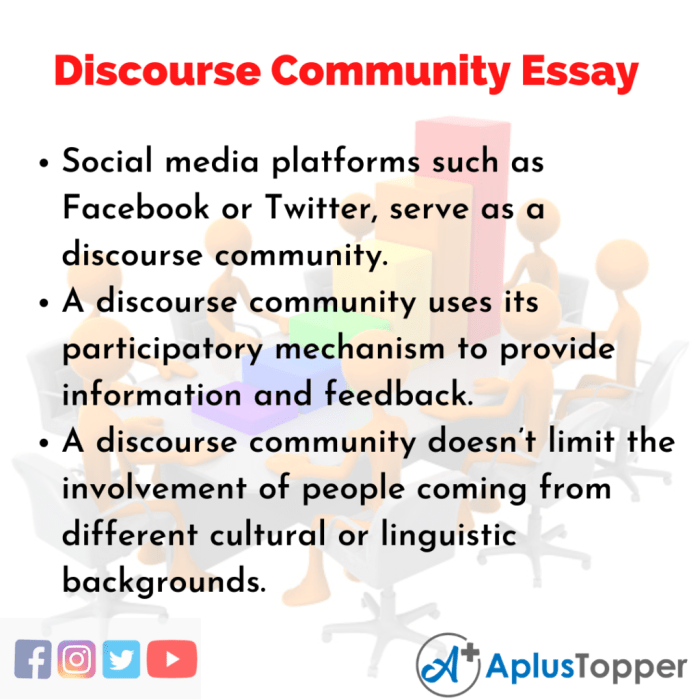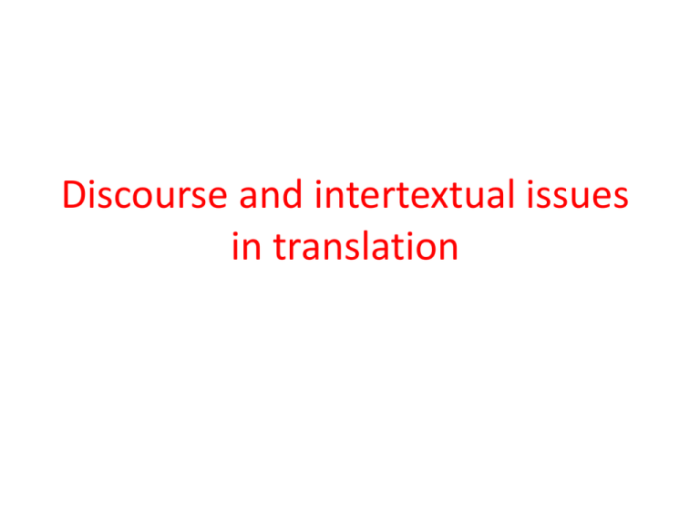Intertextuality and the discourse community are intertwined concepts that profoundly influence the production, interpretation, and reception of literary and cultural works. This exploration delves into the significance of intertextual relationships within discourse communities, examining how shared knowledge, values, and beliefs shape the understanding and meaning of texts.
Intertextuality, the presence of one text within another, serves as a bridge between different works, creating a tapestry of connections that enrich our comprehension. Discourse communities, groups of individuals who share a common interest or purpose, provide the context for these intertextual relationships, shaping the ways in which texts are produced and received.
Intertextuality and Discourse Community

Intertextuality refers to the interconnectedness of texts, where one text references or alludes to another. It is a significant concept in literary analysis as it allows scholars to trace the influences and relationships between different works. Discourse community, on the other hand, is a group of people who share a common set of values, beliefs, and knowledge.
This shared understanding shapes the way they produce and interpret texts, including intertextual relationships.
Intertextual Relationships, Intertextuality and the discourse community
Intertextual relationships can manifest in various forms, such as allusion, parody, and pastiche. Allusion refers to an indirect reference to another text, while parody involves imitating and mocking a particular work. Pastiche, on the other hand, combines elements from different texts to create a new and distinct work.
Intertextuality contributes to the meaning and interpretation of texts by establishing connections between them, adding depth and complexity to the reader’s experience.
Intertextuality and Discourse Communities
Discourse communities play a crucial role in shaping intertextual relationships. Shared knowledge, values, and beliefs within a discourse community create a common ground for understanding and interpreting intertextual references. For instance, in the academic community, scholars often reference and engage with each other’s works, creating a network of interconnected texts.
This shared understanding strengthens the boundaries of the discourse community and reinforces its distinct identity.
Intertextuality in Different Contexts
Intertextuality is not limited to literary works but also manifests in various contexts. In popular culture, films, television shows, and music often reference and draw inspiration from other works. For example, the popular television series “Game of Thrones” incorporates numerous intertextual references to medieval literature and history.
Intertextuality in digital media and online communication takes on new dimensions, where users share and remix content, creating a vast and interconnected web of texts.
Answers to Common Questions: Intertextuality And The Discourse Community
What is the significance of intertextuality in literary analysis?
Intertextuality provides a framework for understanding the relationships between texts, revealing the ways in which authors draw upon and engage with previous works to create new meanings and interpretations.
How do discourse communities influence intertextual relationships?
Discourse communities shape intertextual relationships by providing a shared context of knowledge, values, and beliefs that influence the production and reception of texts within that community.


